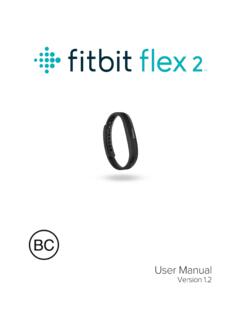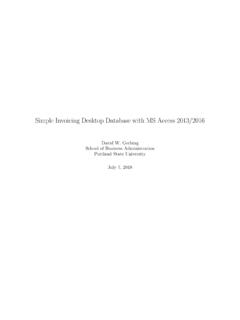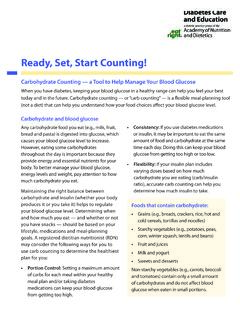Transcription of Solar Time, Angles, and Irradiance Calculator: User Manual
1 To find more resources for your business, home, or family, visit the College of Agricultural, Consumer and Environmental Sciences on the World Wide Web at Time, Angles, and Irradiance Calculator: User ManualCircular 674 Thomas Jenkins and Gabriel Bolivar-Mendoza1 OVERVIEW This user Manual and accompanying Microsoft Excel spreadsheet ( ) are intended to be used as a guide for calculating Solar time, angles, and irradiation, and to aid in feasibility and implementation decisions for Solar energy projects. The spreadsheet is designed to allow you to enter a variety of values such as system location ( , latitude and longitude angles), date, local time, panel tilt angle, etc. By entering different values, you can investigate a variety of scenarios before making final implementation are NO expressed or implied guarantees with this spreadsheet/user Manual , nor is it intended to re-place professional expertise.
2 It is important to note that the system is designed using some average values. Spe-cific values may vary, and this spreadsheet should ONLY be used as an educational spreadsheet consists of different sheets or pages that are indexed via tabs at the very bottom of the spreadsheet window. There is a title sheet and five sheets that represent the five main sequential steps in the cal-culation methodology (Figure 1). The currently selected sheet has a white background, and in Figure 1 this is the Title Page sheet. On each sheet, there are different shaded boxes, areas, or spreadsheet cells. There are light-purple shaded areas that are instructions and user notes that you should read when using each sheet.
3 The green cells are where you can enter information. To enter a value, move the cursor and click on the green cell (or box), enter your value in that cell (typically a number), and press the enter or return key on your keyboard. Some cells have a red triangle in their top right cor-ner. When you place the cursor onto that cell, a pop-up note is displayed giving an additional short explana-tion related to that cell. Some cell entries are restricted in their allowable values. For example, the Hr cell in the Time sheet (Figure 3) will only accept entries be-tween 0 and 23. If you enter a value outside this range, an error message will be displayed and you must re-enter a valid value in this cell before continuing.
4 Some cells may also have a drop-down menu associ-ated with them. A drop-down menu will list the cell s valid entries and allow you to just click on a menu entry. A cell s menu can be accessed by placing the cursor on the cell and clicking on it. A note and a drop-down menu tab are displayed to the right of the cell. When this tab is clicked, the drop-down menu displays the valid entries for this cell. Just move the cursor and click on any menu entry to make it the cell s input , orange boxes display intermediate values that are calculated by the spreadsheet, while yellow boxes show the final calculations in this design step. Step-by-Step Design ProcedureStep 1. Determine the Solar Time and Angles at a Specific Location and DateBegin by opening the spreadsheet and clicking on the Title Page sheet (the left-most tab at the bottom of the spreadsheet; see Figure 1).
5 Read the title page material and view the Solar energy internet videos. Next, contin-ue to the first design sheet by clicking on the Time sheet tab at the bottom of the spreadsheet (Figures 2 and 3). The purpose of the Time sheet is to determine the Solar time at a given location and time. Solar time de-pends on the sun s position and is different from clock or local time. For example, Solar noon is when the sun is at its highest point during the day when it is at true south in the sky2. The input cells in the top-right box allow you to specify your exact location by entering the latitude and longitude as well as the date of interest. The 1 Respectively, Professor and Graduate Student, Department of Engineering Technology and Surveying Engineering, New Mexico State is for the northern hemisphere.
6 True south is different than magnetic of Agricultural, Consumer and Environmental Sciences College of EngineeringCooperative Extension Service Engineering New Mexico Resource NetworkCircular 674 Page 2spreadsheet will automatically calculate the correspond-ing Julian day, which is used in subsequent calculations. Julian days are the ordinal number of the day of the year, starting with 1 on January 1st and ending with 365 on December 31st. The spreadsheet is designed to only accept values for latitudes and longitudes within the continental The time entry cells allow you to input the local time, time zone, and whether Daylight Saving Time is active on the specified date.
7 The time must be entered in 24-hour format. A map and a table located at the bottom-right of the sheet can be used as an aid to enter the time zone. Using the entered values, the spreadsheet will calculate Solar time, angles, and irradiation ( , sunlight intensity) in the corresponding sheets. The spreadsheet shows some intermediate calculations and displays the Solar time highlighted in yellow. It also displays the local time at which Solar noon occurs. Finally, at the bottom of the sheet there are two more input cells that allow you to convert from Solar to local time. This time must be entered in 24-hour format as well, and the local time-value will be shown highlighted in yellow at the bottom of the to the next sheet titled Angles (Figure 4), which automatically calculates the Solar angles relative to the position of the sun in the sky at the specified time and location.
8 The spreadsheet calculates the sun angles at two different times of day. The first is at Solar noon, when the sun reaches its maximum altitude in the sky and irradiates the maximum energy for that day. The second is at the given local time. You DO NOT have to enter any values within this sheet. Sun angles depend upon the day, time of day ( Solar time), and latitude location. Solar declination ( ) is the angle formed between the plane of the equator line drawn from the center of the sun to the center of the earth. This angle varies between on the summer (June 21) and winter solstices (December 21), and is 0 Figure 1. Different sheet tabs within the spreadsheet. Figure 2. Time sheet (part 1).
9 Figure 3. Time sheet (part 2).Circular 674 Page 3on the two equinoxes (March 21 and September 21). The altitude angle ( ) is determined by measuring the angle between the sun and the local horizon directly be-neath the sun. The Solar azimuth angle ( s) is the angle formed between the current east/west position of the sun from true south, where true south is used as the ref-erence in the northern hemisphere and has a 0 relative angle. A positive azimuth angle is before Solar noon and a negative angle is after Solar noon; remember that Solar noon is when the sun is pointing true south. The hour angle (H) is the number of degrees the earth must rotate before the sun is directly over the local latitude.
10 The air mass ratio (m) is how much atmosphere the Solar radia-tion has to pass through to reach the earth s surface. If the sun is directly overhead, the air mass number is 1, indicating one full atmosphere that the sunlight must pass through. If the sun is low in the sky, the air mass number will be greater than 1 since the angle causes the sun to pass through more atmosphere, resulting in a loss of Solar insolation. Finally, the optimal tilt angle ( ) is the angle at which the Solar panel needs to be set to col-lect the most energy from the sun. Figure 5 illustrates these angles. Step 2. Determine Total Insolation on a PanelNavigate to the next sheet titled Insolation (Figure 6), whose purpose is to calculate the amount of Solar energy available depending on the date, time, location, and angle configurations of the previous 4.


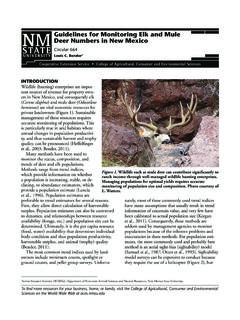






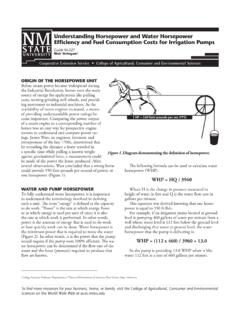


![ABSTRACT arXiv:1602.00763v2 [cs.CV] 7 Jul 2017](/cache/preview/2/3/0/b/b/8/2/e/thumb-230bb82eb0798dc2a6e0ff338f2d979c.jpg)

